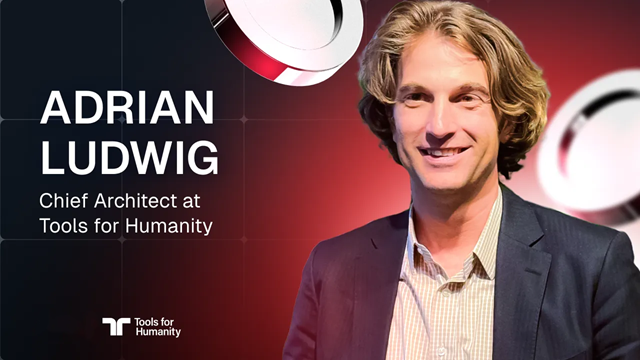Tools for Humanity Chief Architect on the Future of a Human-Centric Internet

In an exclusive interview with BeInCrypto in Seoul, Adrian Ludwig, Chief Architect at Tools for Humanity (TFH), revealed the technological advances of the World Project in building a digital ecosystem that protects privacy, verifies identity, and promotes a people-first Internet.
Ludwig is no stranger to the tech security world. Prior to joining TFH, he served as Chief Information Security Officer at Atlassian and Director of Android Security at Google, where he was responsible for protecting over 2 billion users worldwide.
Accelerating Identity Verification with Security Technology
The World Project, best known for its device-based identity verification system Orb, is scaling at an incredible rate. “We have reached a milestone of over 12 million verified users, with over 500 deployments globally, including over 30 in Korea alone,” Ludwig said.
At the core of the technology is AMPC (Advanced Multi-Party Computation) – a multi-party computation system that protects biometric data by distributing information to multiple parties, with no single party having full access. At the same time, TFH integrates Zero-Knowledge Proofs for verification without revealing personal information.
Expanding applications: from e-wallets to private blockchains
World App – TFH’s e-wallet product – has now reached 25 million users, becoming one of the most popular Web3 wallets. Along with that, World Chain – the Layer 2 blockchain developed by TFH – is leading in transaction volume among second-layer chains.
Notably, TFH has introduced the Mini Apps model – allowing the construction of decentralized applications on the World ID identity platform, creating a friendly and seamless Web3 experience for users.
Orb – open technology for a bot-free Internet
The Orb device is at the heart of the World ID verification system. TFH aims to popularize Orb everywhere – from large public centers to local cafes. “Through the Citizen Operator program, local operators can deploy Orb independently. And soon, we will launch a self-service Orb model,” Ludwig shared.
TFH is also collaborating with businesses like Razer to integrate World ID into gaming platforms, aiming to eliminate bots and deliver a human-centric experience – something that more than 80% of Koreans surveyed said they wanted.
Protecting Privacy with Cryptography Instead of Trust
In response to concerns about biometric data, Ludwig stressed: “Orb is just a high-resolution camera. The image is taken and returned immediately to the user, no storage, no retrieval.”
All data is encrypted to the highest standards and broken down across different parties using MPC techniques. This means that no one – not even TFH – can access the entire data.
“People often have no idea how the photos they take in a park or at an airport are used. With World ID, the control is in the hands of the user,” he added.
Connecting with governments and national infrastructure
TFH is currently in talks with governments like Malaysia to integrate World ID into their national identity systems. The goal is to help people prove essential attributes – like age or nationality – without revealing personal information, while also reducing fraud in social programs.
In particular, amid growing concerns about foreign interference, countries like Taiwan are considering using World ID to limit access to sensitive digital services to verified citizens.
Shaping the Web3 future: Source code instead of intermediaries
“We’re not building World as a company – we’re building it as a global protocol. The trust is not in individuals or organizations, it’s in the technology, the cryptography, and the openness of the system,” Ludwig said.
The Orb device could be manufactured by any third party in the future thanks to open source, and users would only need to trust the protocol rather than any specific manufacturer.
